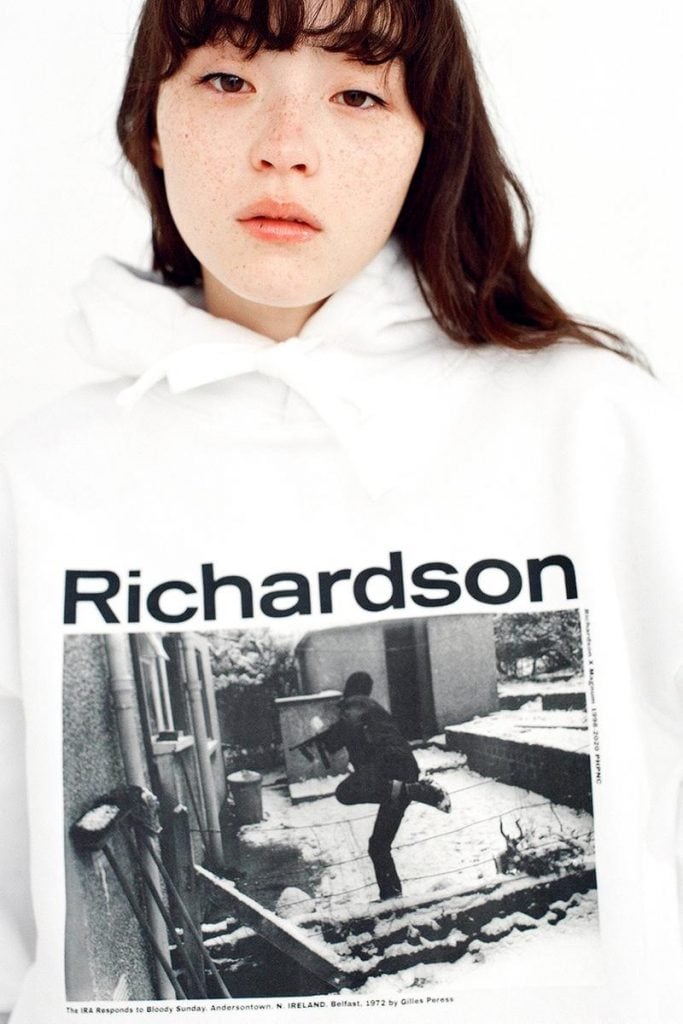Law & Politics
Magnum Photos Is Threatening to Sue a Streetwear Company That Used Its Inflammatory Images of Historical Conflicts for a New Clothing Line
The collection was pulled from sale quickly after it was released.

The collection was pulled from sale quickly after it was released.

Taylor Dafoe

Magnum Photos is threatening legal action against a streetwear company that released—and quickly withdrew—a new clothing line featuring documentary images from the photography cooperative’s archives, along with its logo.
The clothing company Richardson briefly marketed t-shirts, hoodies, and jacket with images by photographers Danny Lyon, Gilles Peress, Antoine D’Agata, and Hiroji Kubota. Among the pictures used was one of a Irish Republican Army (IRA) soldier after Bloody Sunday, as well as other charged documentary images of other historical conflicts.
Other items of clothing feature a Lyon photograph of prisoners in a Texas penitentiary, and a Kubota shot of three members of the Black Panther party standing in a snowy Chicago rail yard.
“Our representatives have initiated legal action regarding this matter to protect the intellectual property rights of Magnum and its photographers, so we cannot comment further at this time,” a Magnum spokesperson told Artnet News.
https://www.instagram.com/p/CMhiqdzB5Na/
Andrew Richardson, the designer behind the label, says the collection was conceived as a companion to his art and erotica magazine, which was founded in the late 1990s. The Peress photograph was published in the third issue, while other pictures by Danny Lyon and D’Agata have also appeared in the magazine.
Kubota, the only artist not to have been featured in the magazine, signed off on the capsule collection and “contacted Magnum with praise and excitement about the finished products,” according to the publisher.
“As a brand that started as a magazine, the relationship between the images we feature in our clothes and the texts we have published is perhaps more complex than other streetwear brand,” Richardson added. “But we feel it is these interdiscursive conversations that weave our brand together as a whole.”
Richardson previously worked with Magnum on a clothing capsule pegged to the agency’s anniversary in 2017. Magnum’s logo was included on that line, which is why he says the current legal dispute came as a surprise.
https://www.instagram.com/p/CMhU_ttBrT_/
For Richardson, the inclusion of Magnum’s images was meant to be generative, not exploitative.
“Once we have paid the cost of licensing the images and the cost of manufacture these, kinds of capsules are not really serving ‘commercial purposes,’” he says. “This project is not meant to capitalize on photo documentarians. To the contrary, we feel that we offer a unique venue for these wonderful images and artists to be rediscovered, and to circulate as part of a contemporary conversation that they are certainly relevant to, but often excluded from.”
The dispute comes amid a thorny, months-long controversy over Magnum’s archive and the way the cooperative chooses to license its images.